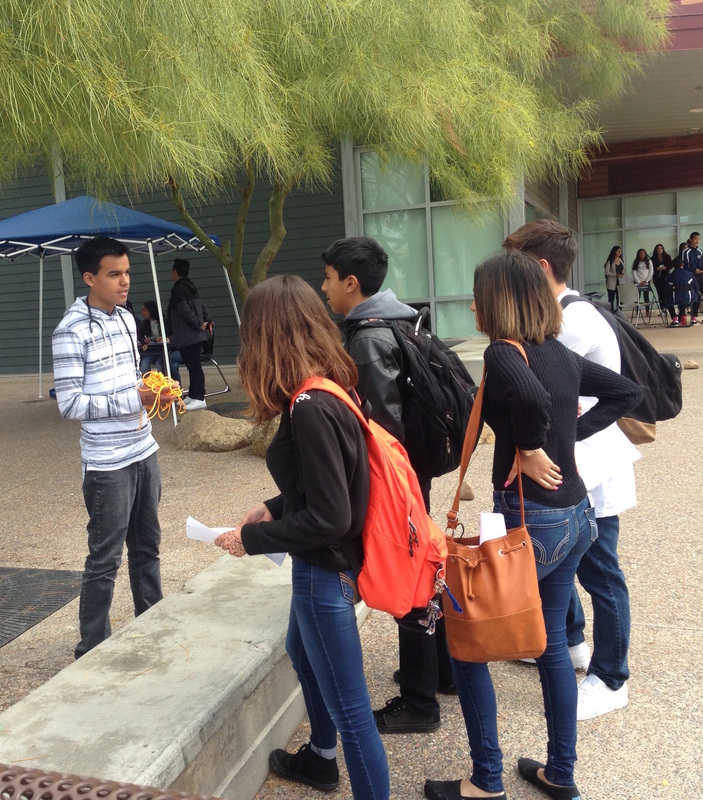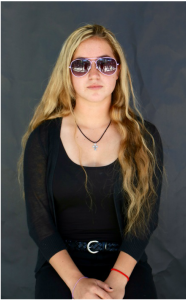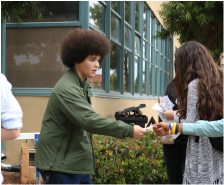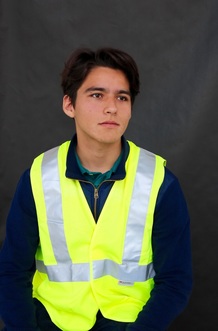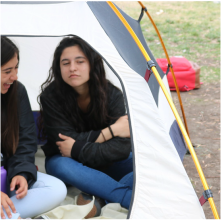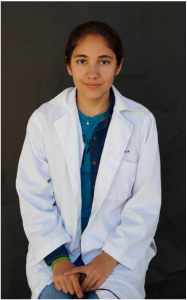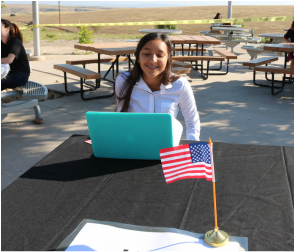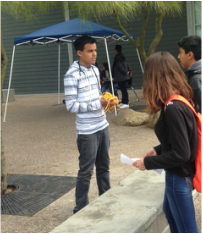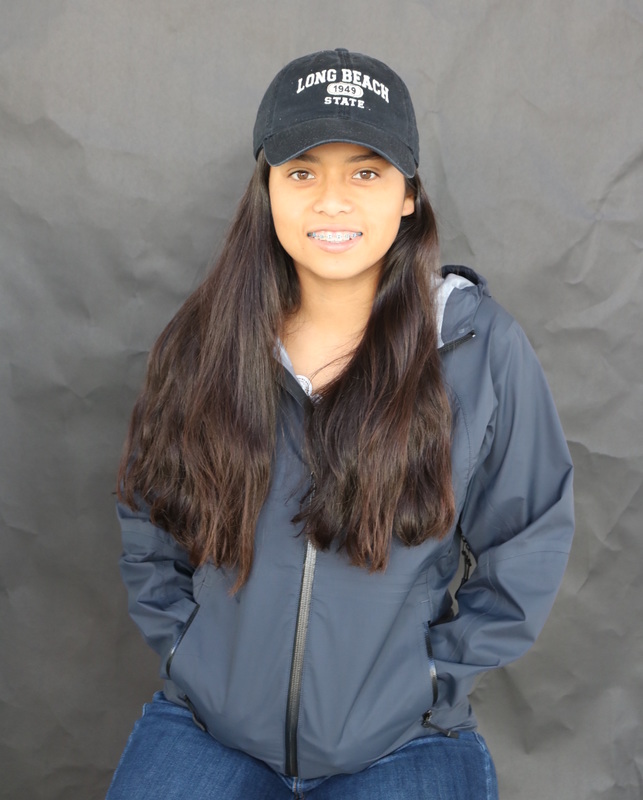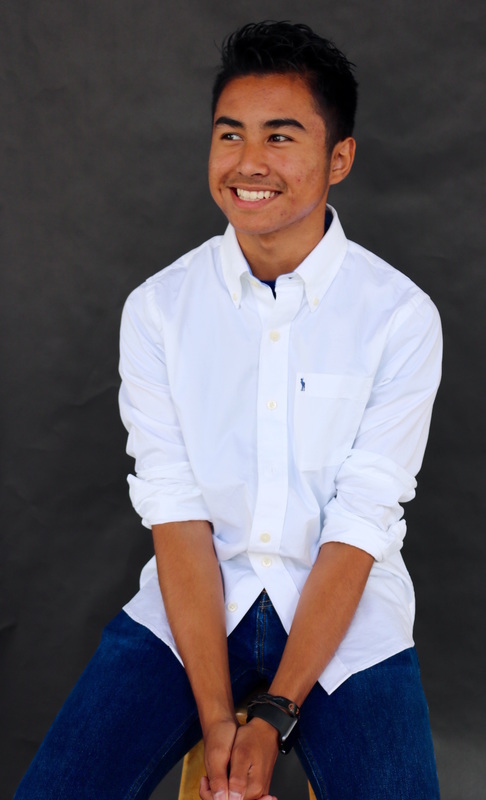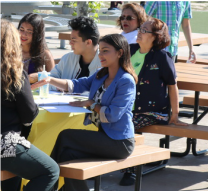The Syrian Refugee SimulationIn this student-created and student-run simulation, participants take on the roles of Syrian citizens forced to leave and seek refuge in another country.
Participants physically move through the simulation from station to station, starting in Raqqa, Syria, where they are given their character information and their papers. This briefing is interrupted by ISIS members. From here, participants sneak across the border to Turkey, get to a refugee camp, and decide whether to apply for resettlement overseas or pay a smuggler who promises to get them to Greece. At each station that participants reach, characters based on real people are there to help or hinder their passage, and each of these characters has a story to tell - if they are asked. This simulation premiered at Festival Del Sol on Wednesday, April 13th, 2016. It's now featured as an Unboxed Card too! |
What participants had to say about the Syrian Refugee Simulation:
"The students did such a great job and made quite an impression on both my husband and I. When I talk to friends about it they tell me it seems like I actually lived it because I was so impacted by it. I can't think of anything to improve it. Congratulations."
"I was impressed by every stage and the organization of the whole simulation, but two things stood out to me the most. One was Lily in the role of ISIS, because she really went all out with that role - her whole group did - and she made us feel afraid and intimidated. I remember being impressed by how all of the students took their roles seriously and didn't break character. I also remember Javier explaining each station to me so that I could get a clear overview."
"I've never taken the time to really try to take the perspective of a refugee. This simulation made me step into their shoes. Obviously, I can't fully experience what any of the refugees have experienced or suffered, but the simulation brought to light how little I understand about the daily struggles and how separate I am. I want to be more connected, productive and helpful in addressing this crisis."
"I was genuinely concerned for my own safety when the students playing the roles of ISIS leaders were screaming at us...I also remember the obvious amount of research and coordination that must have been necessary to make this simulation a reality. I left wanting to experience the simulation more and to have my students experience it as well. This simulation demands to have a larger audience than just one day, so I hope you all can find additional opportunities to share this work with others."
"By being a participant rather than a passive observer, I was forced to consider the emotional burden of trying to flee your country, of wondering if you had enough money, of agonizing over whether or not I would actually make it to safety. When I read the news, I don't have to think about the human experience, but when I went through the simulation I had to."
"The process is longer and more difficult than I would have thought. I was also surprised that each of the obstacles throughout the journey were so different from the others. Parts of my identity that might advantage me in one situation might also disadvantage me in another situation. I was struck by how many "in between" places I found myself stuck in. There were points where I don't think I was technically in any country, and I wondered where I was going to end up. I felt desperate and powerless."
"I was impressed by every stage and the organization of the whole simulation, but two things stood out to me the most. One was Lily in the role of ISIS, because she really went all out with that role - her whole group did - and she made us feel afraid and intimidated. I remember being impressed by how all of the students took their roles seriously and didn't break character. I also remember Javier explaining each station to me so that I could get a clear overview."
"I've never taken the time to really try to take the perspective of a refugee. This simulation made me step into their shoes. Obviously, I can't fully experience what any of the refugees have experienced or suffered, but the simulation brought to light how little I understand about the daily struggles and how separate I am. I want to be more connected, productive and helpful in addressing this crisis."
"I was genuinely concerned for my own safety when the students playing the roles of ISIS leaders were screaming at us...I also remember the obvious amount of research and coordination that must have been necessary to make this simulation a reality. I left wanting to experience the simulation more and to have my students experience it as well. This simulation demands to have a larger audience than just one day, so I hope you all can find additional opportunities to share this work with others."
"By being a participant rather than a passive observer, I was forced to consider the emotional burden of trying to flee your country, of wondering if you had enough money, of agonizing over whether or not I would actually make it to safety. When I read the news, I don't have to think about the human experience, but when I went through the simulation I had to."
"The process is longer and more difficult than I would have thought. I was also surprised that each of the obstacles throughout the journey were so different from the others. Parts of my identity that might advantage me in one situation might also disadvantage me in another situation. I was struck by how many "in between" places I found myself stuck in. There were points where I don't think I was technically in any country, and I wondered where I was going to end up. I felt desperate and powerless."
What students said about The Syrian Refugee Simulation:
|
My 10th grade class came together to create a realistic and educational simulation to give people an authentic refugee experience. Through this project I became an expert on how this complex crisis began, on refugee camps across the world, the effects of refugees on a community and the struggles a refugee faces. My class's job was to show outsiders this information in an unbiased and exciting way, and that is exactly what we did.
-Caitlyn, Officer at Kilis Refugee Camp (read more on her digital portfolio) |
|
I was smuggling people out of Syria in the simulation. When I said I could only take seven people, I chose one mom and not her kid, and the girl tried to sneak along to, but I said again that I could only take seven and made her stay.
-Alex, Syrian People Smuggler (read more on his digital portfolio) |
|
I researched accurate statistics for how many refugees get in or are allowed to pass through Austria, and created a card system with a standard 52 card deck that reflected these statistics. I remember having to search through multiple sources until I found an article that had specific information backed by other articles. When researching I used the news filter on google that gave me a lot of relevant articles to choose from.
-Diego, Austrian Immigration Officer (read more on his digital portfolio) |
|
Having the refugees (8th graders) come through our station was the highlight of my day they were just so silly, there was one little girl in particular she was laughing so at us and she was getting frustrated because she wasn't getting accepted anywhere and she didn't have enough money to be smuggled so she was just stuck.
-Jazmin, refugee living in Kilis Refugee Camp (read more on her digital portfolio) |
|
In Germany we included both Angela Merkel's and the protesters' opinion. I am proud that our group worked really hard on making our station realistic and that I was able to stay in my character and make people who passed through uncomfortable.
-Jo, German protester (read more on her digital portfolio) I went from working in Denmark as a smuggler to a protester in Germany, because I found out that Germany needed an extra person to help with the protesting. -AJ, German protester (read more on his digital portfolio) |
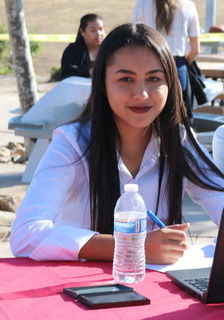
My character's name IS Azizah Bishara, she is a 12-year-old Christian female, and she works as an anesthesiologist. She suffered a lot while growing up and she still does. Getting into character was really hard for me because Azizah became a little mean after what she has gone through,
-Litzye, refugee living in Denmark (read more on her digital portfolio)
|
On the day of the simulation, I would be lying if I didn't say I was nervous. As soon as the time came to get ready everyone was rushing out and everywhere getting ready for the simulation. Our station was almost ready, but we were cramped in one small space with the Turkish camp and the Canadian embassy. After some time and discussion, we were able to find a solution: we just moved a little, and set up our station right beside the Turkish camp.
-Ilse, US medical examiner based in Kilis Refugee Camp (read more on her digital portfolio) |
|
Watching the audience feel real emotions as if they were an actual refugee was a true pleasure because thats what I think the whole purpose of this project was- making sure are community understands the truth about the Syrian war and the refugee crisis. I was very proud of the simulation as a whole and I could honestly say there is not one thing I would change about the final result.
-Kaia, American Refugee Resettlement Authority (read more on her digital portfolio) |
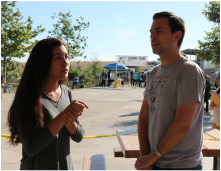
We went through Socratic seminars deciding whether to do an exhibition or play. We also went on a field trip to the Museum of Man's race exhibit to see what we wanted to incorporate in our own. I had personally wanted to do a play at first but realized that a simulation would be more out of the box.
-Raylene, Hungarian animator (read more on her digital portfolio)
-Raylene, Hungarian animator (read more on her digital portfolio)
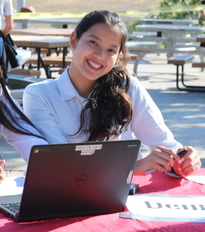
We did a simulation in the canyon and went on a huge adventure. I loved the canyon simulation because we really experienced the heat and were very tired and our feet were sore.
-Abril, Refugee living in Denmark (read more on her digital portfolio)
We did a simulation in the canyon and went on a huge adventure. I loved the canyon simulation because we really experienced the heat and were very tired and our feet were sore.
-Abril, Refugee living in Denmark (read more on her digital portfolio)
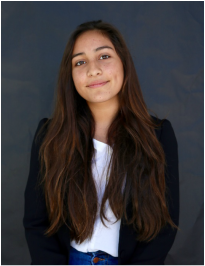
Something that I'm really proud of is the detailed description of each scenario in Greece's station design document. I'm really happy that most of the people in my group finished everything they were supposed to do on time, and if someone couldn't do one of the things, another person in our group would step in, which was something nice to do.
-Elizabeth, Greek UNHCR volunteer (read more on her digital portfolio)
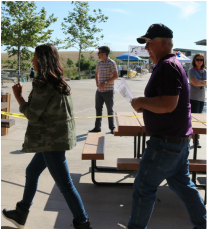
When we got the design doc they were telling me I should be a smuggler. I was okay with it, but I didn't know as much about smuggling and I had to research more.
-Angelica, smuggler (read more on her digital portfolio)
When we got the design doc they were telling me I should be a smuggler. I was okay with it, but I didn't know as much about smuggling and I had to research more.
-Angelica, smuggler (read more on her digital portfolio)
|
The first playtest was messy but good. Everyone was very confused and so were the refugees. At the time I really didn't know what to do and how we were supposed to make our station interactive. Although I was confused it helped me know what I was missing in our station and what I could prepare for the next play test.
-Jose, Greek doctor (read more on his digital portfolio) |
|
My station was one of the ones that got to experience going through a playtest and having people run through ours. When we got to go through another station's simulation, we got to take what was working for them and use it ourselves. For example, we had a part where refugees had to fill out an application, and I got that idea from another station.
-Mariana, Hungarian Immigration Officer (read more on her digital portfolio) |
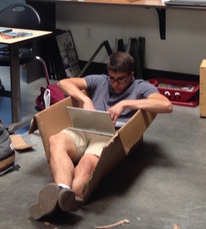
During play tests we [smugglers in Izmir, Turkey] routinely ripped people off, and the price of the boat changed with every group depending on how much money they had. My character was named Ferit, and was the youngest brother of a family-owned fishing company that he ran with his two brothers, and a family friend named Yousef who was out of a job and recovering from substance abuse. The hardest part about acting this character was not laughing as I got into fights with co-workers about how many refugees to let onto the boat at one time.
-Max, Turkish Refugee Smuggler (read more on his digital portfolio)
-Max, Turkish Refugee Smuggler (read more on his digital portfolio)
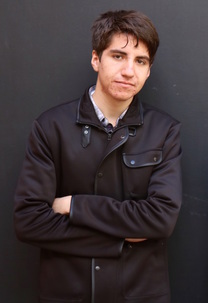
In the third playtest, even though we had all of our information and our tools that we needed to accurately portray our country's role in the refugee crisis, we still needed to really flesh out our characters. One thing we noticed about the playtest as we were going through it was how unnatural and non-immersive the communication was between us and the refugees. We tried to try out different ways to portray our characters, but we knew that this was something that needed to be changed for the final playtest.
-Jakob, Austrian Police Officer (read more on his digital portfolio)
|
My character's name is Aaron Strand, and he's a Danish resettlement authority. His grandparents were refugees in World War II; and they would always tell him stories about how it was living as a refugee. He now wants to help people in the same situation his grandparents were in.
-Matthew, Danish Refugee Resettlement Authority (read more on his digital portfolio) |
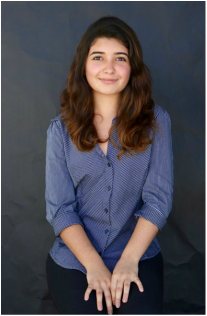
My character was, Adelaide Williams, Head of Communications for the UN's High Commission on Refugees (UNHCR). My character was based on of an actual person so I was able to research her and see what she does day to day. I was then able to work that into the simulation and acting as that character.
-Melissa, UNHCR Head of Communications (read more on her digital portfolio)
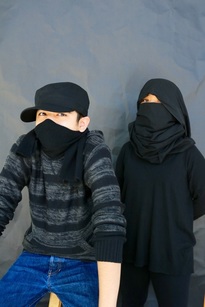
My character is an ISIS soldier who just seeks slight fame and great fortune. He's the silent type and just does his job and whatever he is told.
-Miguel, ISIS fighter (read more on his digital portfolio)
A teammate and I portrayed ISIS fighters, so we were threatening participants and demanding they conform to ISIS's beliefs. Throughout the playtests we changed stage management and how we will act with participants. We were interacting more with participants and we became more threatening.
-Lily, ISIS fighter (read more on her digital portfolio)
-Miguel, ISIS fighter (read more on his digital portfolio)
A teammate and I portrayed ISIS fighters, so we were threatening participants and demanding they conform to ISIS's beliefs. Throughout the playtests we changed stage management and how we will act with participants. We were interacting more with participants and we became more threatening.
-Lily, ISIS fighter (read more on her digital portfolio)
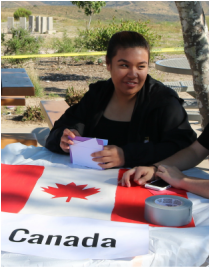
I remember when we were only getting one person at a time then later three came at once, which of course I got nervous, but I then got over it when felt comfortable. One cool thing our station did was since we are a country that usually accepts refugees, we accepted all of them and children also.
-Acel, Canadian Employment Agent (read more on her digital portfolio)
|
Almost everyone that passed through the simulation and went to the debrief room told me what a great simulation it was and how realistic it felt for them, they also told me that even though it felt real , they sort of knew that after that they knew they were going home, but other people don't know that, that this is their everyday life, and this is a reality for a lot of people.
-Verenice, Journalist (read more on her digital portfolio) |
All the handouts, presentations, and resources that went into this project
You can see all the important documents that we used in this project by reading students' digital portfolios, but if you want to go REALLY deep into the inner workings of this project, you can see all the documents I made for this project, organized by week, here.
My fellow-teachers and I also created a document with tons of links to resources about refugees, here.
Finally, you can see the full "Simulation Design Doc" here. You could, conceivably, re-create the full simulation using this.
My fellow-teachers and I also created a document with tons of links to resources about refugees, here.
Finally, you can see the full "Simulation Design Doc" here. You could, conceivably, re-create the full simulation using this.
Acknowledgments
Thanks to Aaron Vanek for his advice on educational LARP, Jamie Antonisse for his advice on the game design process, and Matt Simon, for his advice on doing a project about a story that's continuing to develop.
Thanks also to Sirvo Studios for letting me hang out and see how you work, and to everyone who joined us for a playtest, and to everyone who came and talked to us about the refugee crisis.
Thanks also to Sirvo Studios for letting me hang out and see how you work, and to everyone who joined us for a playtest, and to everyone who came and talked to us about the refugee crisis.
